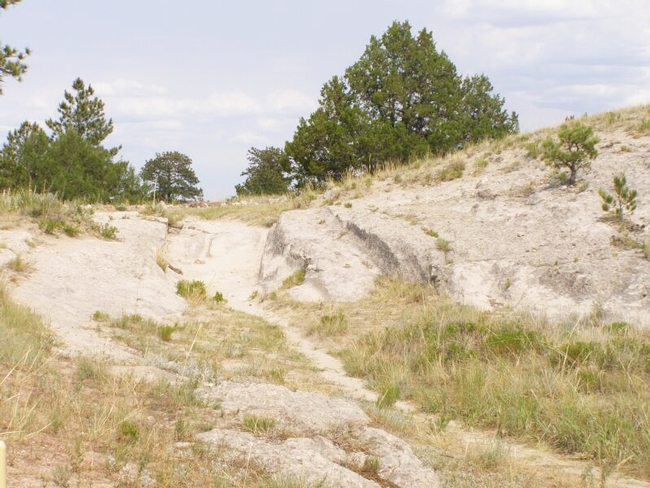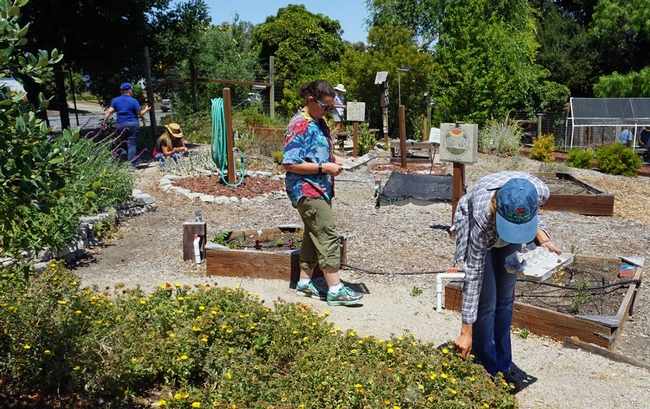With winter soon upon us, it's a good time to treat your garden bed just like the one where you tuck in at night, says Dustin Blakey, UC Cooperative Extension advisor, director and UC Master Gardener coordinator in Inyo and Mono counties.
Blakey hosted a webinar on Facebook during Healthy Soils Week 2020 (Nov. 30 – Dec. 5) to advise home gardeners how to promote healthy soils to maximize their gardening success.
“Some genius suggested we call garden plots ‘beds,'” he said. “It makes sense. Mom was right. Don't stand or walk on the bed. Keep it neat and tidy. And cover it, in the case of a garden bed, with organic mulch.”
The goal is to end up with garden soil that holds adequate water, nutrients and air, supports soil life forms, like worms, insects and microorganisms, and is convenient to work with.
“If I have to get a mallet to bang a trowel into the ground, it's not healthy soil,” Blakey said.
As a first step, designate permanent walkways in the garden so only those areas become compacted by foot traffic, leaving the plots where vegetables will be grown undisturbed.
“Along parts of the Oregon Trail, almost 200 years later you can still see the ruts where the wagon wheels rolled, and plants aren't growing there,” Blakey said.
He recommended gardeners cover their walkways with gravel, decomposed granite or organic materials like wood chips, bark or grass. Installing raised garden beds is an ideal way to differentiate growing and walking areas. In his own garden, Blakey built the beds four feet wide to have easy access to all the plants while standing on the walkways.
Add compost to the soil inside the beds to reap a variety of benefits.
“It's often said, no matter the problem, compost is the solution,” Blakey said.
Compost provides a food source for beneficial microorganisms in the soil. If soil is sandy, compost helps it hold water and nutrients. If the soil is clay-like, compost loosens the soil, making it more friable.
Covering the garden soil surface with mulch or cover crops is also critical to soil health, Blakey said. The topping moderates the soil temperature, supporting the organisms living below ground. The covering helps prevent weeds, and as the mulch breaks down, it adds organic matter to the soil.
“You can also grow cover crops,” Blakey said. “I'm surprised how few gardeners use cover crops. Put some seeds in the ground instead of buying a bag of amendments.”
Cover crops can be part of a healthy garden crop rotation, keeping roots growing in the soil all year long.
“Grasses scavenge nutrients. Legumes fix nitrogen. I grow sweet potatoes. They shade everything and keep the weeds at bay. A daikon radish cover crop penetrates deep into the ground, naturally tilling the soil,” he said.
Blakey discourages a common habit of some long-time gardeners, frequent rototilling with a heavy machine, and rather encourages what he calls “gentle tilling.”
“You don't need power equipment. Experiment with using a shovel,” he said. “My soil is loose and easy to work. Some beds, I don't even turn. I just plant directly in the healthy soil.”
View a recording of Blakey's one-hour webinar on healthy soil on the UC Master Gardener Program Facebook page: https://www.facebook.com/UCMasterGardeners. The UC Master Gardeners offer many online gardening resources and programs in most California counties. Find your local program at http://mg.ucanr.edu/FindUs.

